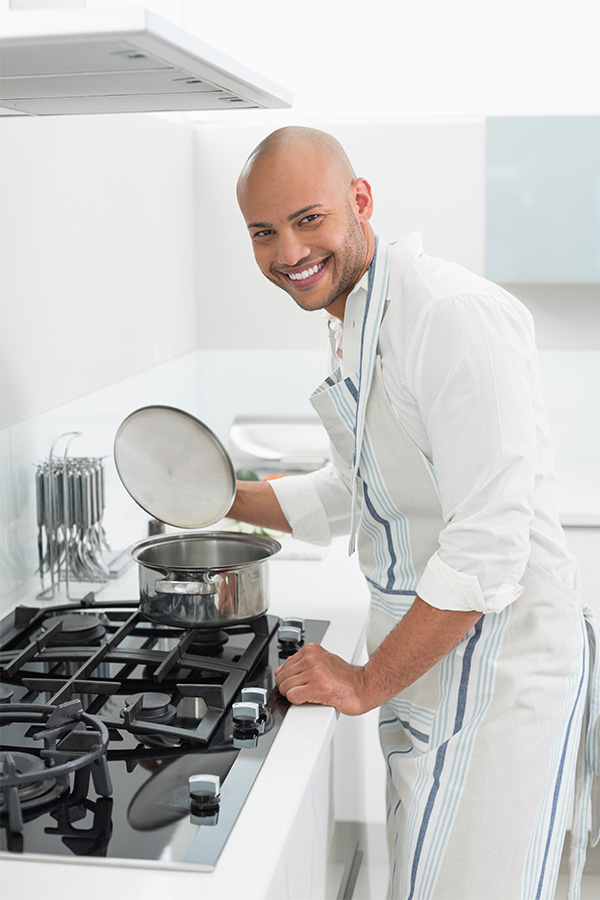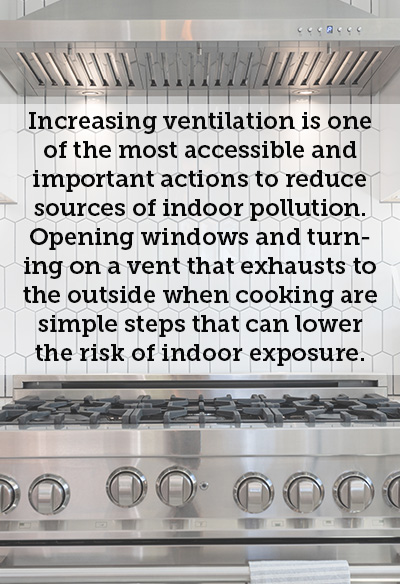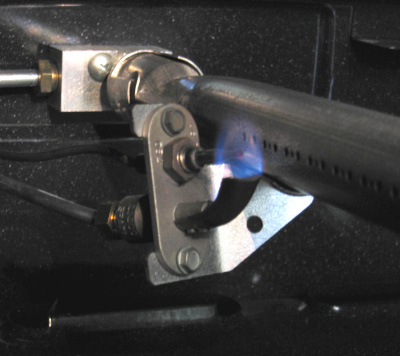Gas Stove Studies – Consider the Source
This message is brought to you by…
Efforts to ban highly efficient natural gas stoves, and other appliances, should raise alarm bells for the millions of Americans who depend on this essential energy every day. Across the country anti-fossil fuel proponents have funded unrealistic studies and convinced officials to ban the direct use of natural gas in federal buildings and in new home construction.
Recent proclaimed reports and studies regarding the effects of natural gas stoves continue to circulate in the media. The reports about these studies seem to indicate that indoor air quality is adversely affected by natural gas stoves and ovens. Media reporters quote researchers outside of the public health community who may not be as objective about the science, or transparent in their research methods as federal agencies such as the EPA, which have a statutory responsibility for objective and transparent research.
The statement, “This message is brought to you by….” is an important clue in understanding the tactics and implications of the underlying study. The studies referenced in current reports are brought to you by groups campaigning to phase out fossil fuels in buildings and accelerate electrification efforts.
While combustion of natural gas from ranges, ovens, and cooktops can contribute some emissions, there are no documented risks to respiratory health from the regulatory and advisory agencies and organizations responsible for protecting residential consumer health and safety. Federal agencies such as the Consumer Product Safety Commission (CPSC) and the Environmental Protection Agency (EPA) closely monitor and have evaluated homes with natural gas appliances and have never taken action to limit their use on methane emissions as suggested in this study.

Methodology to obtain data is an important component in analyzing results.
The methodology, along with the comparisons used in these studies, was not appropriate or realistic. In both cases, indoor air modeling was conducted assuming no venting of appliance emissions to the outside.
The researchers created an unrealistic kitchen environment to achieve their results.
The researchers’ methods included sealing the kitchens with plastic sheets to minimize ventilation. Sealing the room with plastic also meant sealing any ventilation to the exterior to prevent any cross contamination with outdoor air. And instead of using the “ductless” range hoods, researchers used indoor fans to circulate air at selective locations and speeds, as to not interfere with the burners. Vented hoods have a high degree of effectiveness when overhanging the stove, and their counterpart, the “ductless” range hoods, feature activated carbon filters to remove particulate matter and pollutants from recirculated air. The selective choice in air circulation is in no way a realistic measure of the circumstances in a typical home.
In addition, in order to make the claim that gas stoves are harmful to health, the researchers compared NO2 emissions readings over the course of a few minutes to the NAAQS one-hour outdoor air quality standard.
Indoor air quality studies have consistently found that emissions from the cooking process, whether electric or gas, represent the chief source of emissions.
Anyone who has burnt a meal or inhaled the smell of baking bread has experienced some of the cooking process emissions that can temporarily impact indoor air quality (IAQ). Beyond these obvious cooking process emissions, the overwhelming consensus regarding IAQ and residential cooking is chiefly associated with emissions from the cooking of fats and oils. These pollutants can be easily addressed with good kitchen ventilation.

And while the study wants to bring its findings to a national level, it can’t group different technologies in natural gas ranges together. Stoves with pilot lights were found to produce larger amounts of methane in the study because they require constant natural gas and there are delays in ignition between steady-off and steady-on states. Newer natural gas appliances don’t include the inefficient pilot light model, and pilot lights are uncommon after the U.S. Department of Energy’s “no standing pilot light” rule prohibited standing pilot lights in gas cooking products as of 2009.


This claim is not supported by research. Research that covers multiple decades shows that cooking with natural gas is safe and does not negatively affect indoor air quality or the health of people living in the home. The largest study to date, the International Study of Asthma and Allergies in Childhood, investigated a possible connection between gas stove use and asthma in more than 500,000 schoolchildren in 47 countries and concluded there was “no evidence of an association between the use of gas as a cooking fuel and either asthma symptoms or an asthma diagnosis.”¹
Furthermore, a recently published review of 66 epidemiology studies found that there was a low study quality and a high study variability thereby illustrating that previous studies pertaining to natural gas cooking, nitrogen dioxide, asthma and wheezing are variable and have quality flaws. Global Epidemiology research determined during its review that “there is no scientific basis to draw any conclusions concerning a causal relationship” ² between cooking with natural gas and asthma.
No. Research has shown that it is not the type of appliance being used that can impact indoor air quality; it is more about the type of food being cooked and the oils that are used to cook the food. The temperature of the cooking and the length of cooking time also play an important role. Regardless of the type of stove being used, the key is to properly ventilate the area when cooking.¹
No. The authors of the article that made this claim have used a “beyond worst case scenario” to model potentially extreme levels of benzene in atypical circumstances. Per the American Gas Association, if these levels did occur, the odorants in natural gas would alert the homeowner/building occupants long before there were elevated levels of benzene. Further investigation into methods, assumptions and results is required to create a full explanation of the pertinent facts. ³
1 Dr. Dan Tormey, President of Catayst Environmental Solution,
Published in the Washington Examiner, March 28, 2023
2 “Gas Cooking and Respiratory Outcomes in Children: A Systematic Review“ Published in Global Epidemiology, April 18, 2023
3 Article by Dan Costley,
Published in Environmental Science and Technology, October 20, 2022
© Energy Solutions Center Inc. – All Rights Reserved
As with all appliances, we encourage consumers to practice safety and follow manufacturer’s guidelines. Keep these recommendations in mind when cooking with natural gas:
- Make sure your gas range, oven or cooktop has been design-certified to the ANSI Z21.1 standard which includes requirements for proper operation and limits on emissions.
- Make sure your gas kitchen appliance is installed in accordance to local installation codes: The INTERNATIONAL FUEL GAS CODE or the NATIONAL FUEL GAS CODE.
- Keep your gas range maintained in good working order and periodically inspected by a qualified contractor.
- Install an exhaust for all electric and natural gas ranges, cooktops and ovens to eliminate the normal byproducts of cooking such as steam, smoke, grease, and heat.
- Indoor gas grills should have an exhaust system.
- For any cooking equipment, a traditional overhead exhaust fan that runs through a wall or ceiling can be used. Other types feature “downdraft” exhausting, which uses a fan to draw cooking byproducts down from the cooking surface to the outdoors. Downdraft exhausting is appropriate for equipment installed in an island if the homeowner does not want a traditional oven exhaust hood in the center of the room.
- Always try to use the appropriate pot or pan size when cooking.
- Never use your gas cooking appliance for domestic space heating.
- Never cover your oven bottom cavity with aluminum foil.












